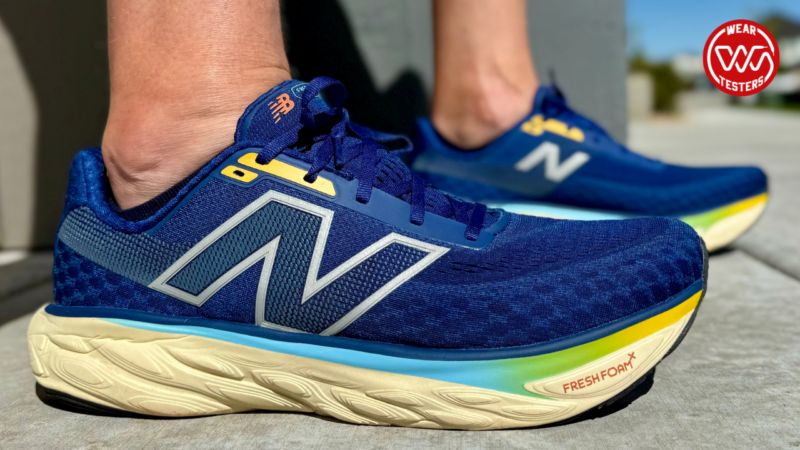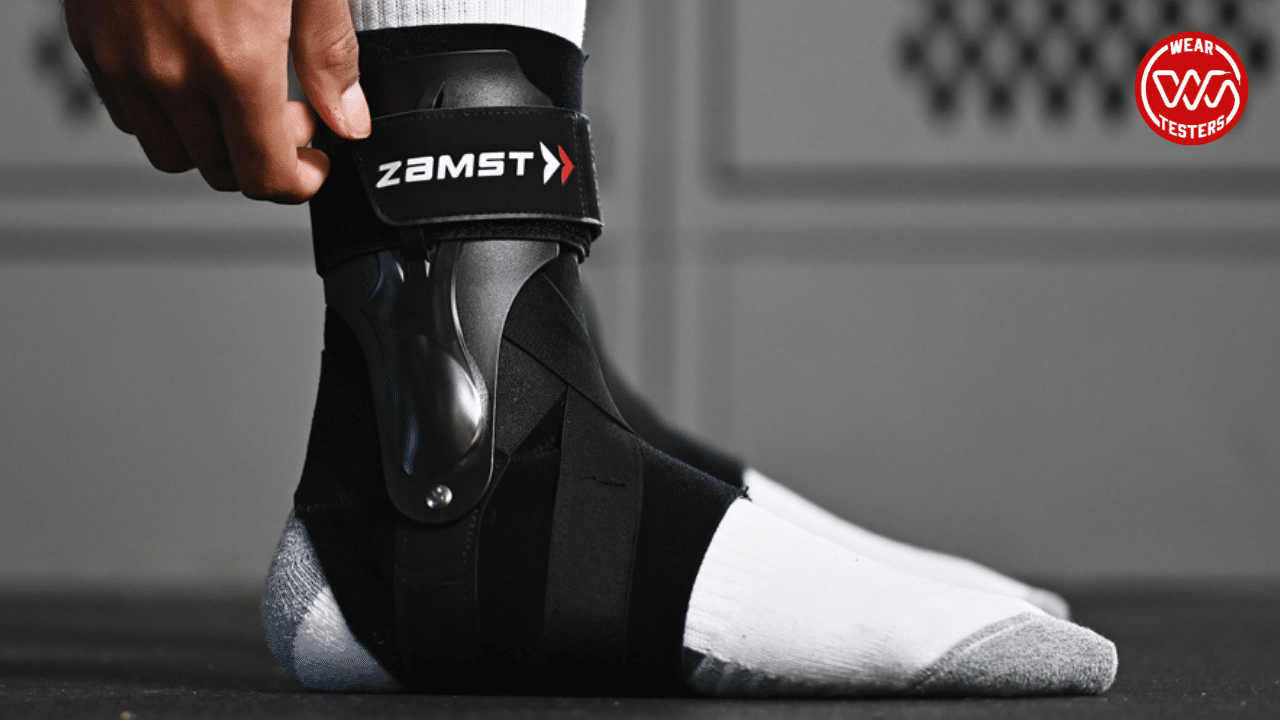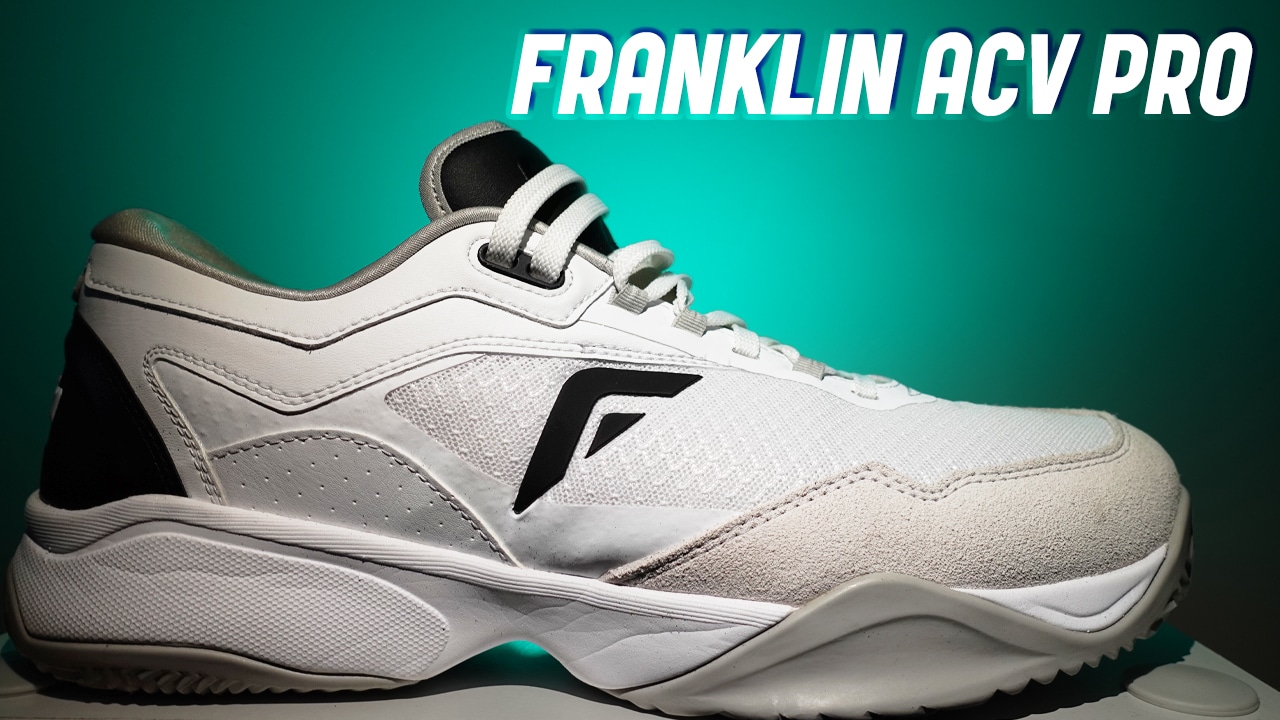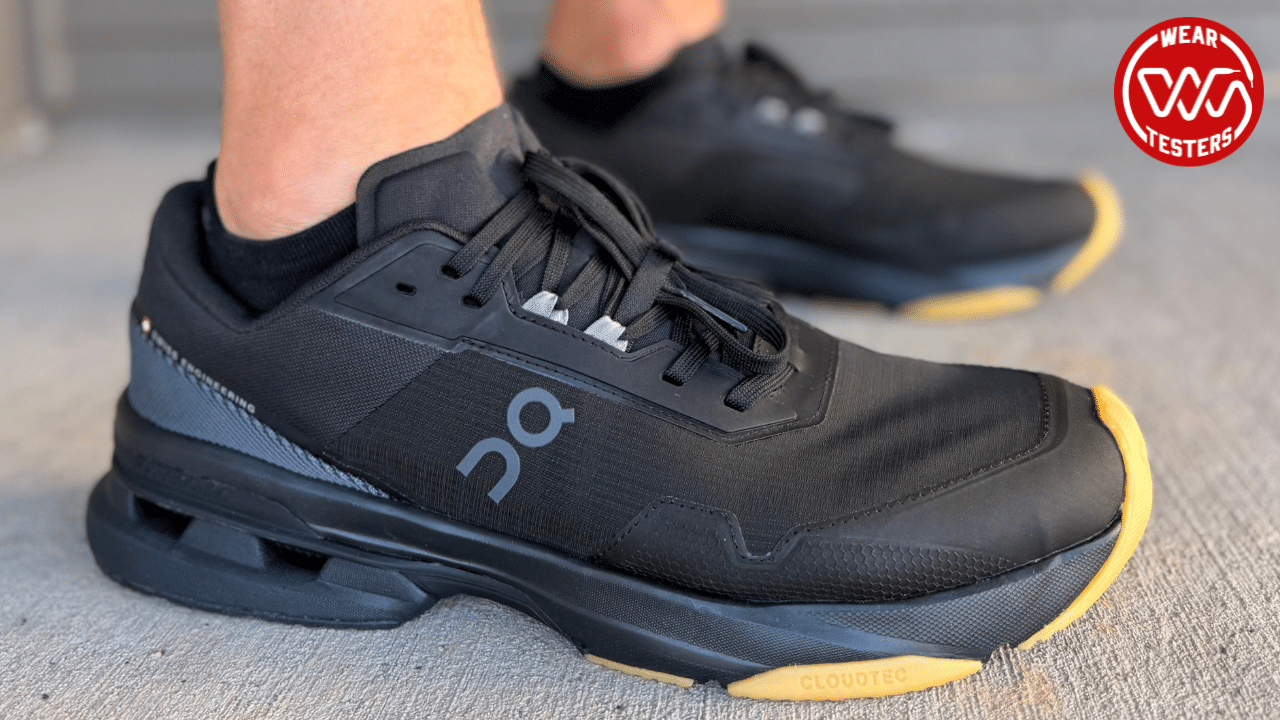The New Balance Fresh Foam X 1080v14 didn’t change much from the best 1080 ever, the 1080 v13, and that’s a good thing. The name is again too long so we’ll shorten it to New Balance 1080v14 for the rest of this review. But let’s dig into why the small tweaks New Balance made were the perfect direction to go with this shoe.
New Balance 1080v14
Release Date: October 10, 2024
Price: $165
Weight: Men’s 10.4 oz., Women’s 8.3 oz.
Drop: 6mm
Sizing: True to size
- Rundown: The New Balance 1080v14 slightly tweaks the 1080 formula established with the 1080v13 resulting in a more durable but slightly less squishy experience.
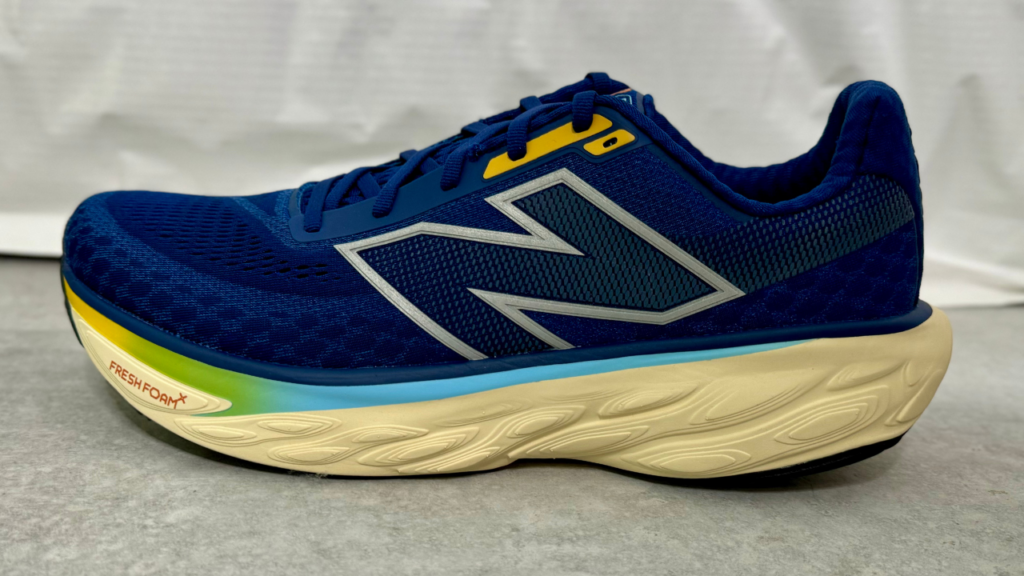
What is the New Balance 1080v14?
The New Balance 1080v14 looks a lot like the 1080v13. The 1080v13 had a sleeker look than any 1080 before it, so it’s nice New Balance just refined the look versus pivoting away.
The changes in the upper are small and almost not even worth mentioning. Engineered mesh returns with what New Balance claims is increased breathability. The overlays and strengthened sections changed a bit, but nothing noticeable to the non shoe geeks among us.
New Balance stiffened up the forefoot a little bit which removes some of the squishiness but is highly likely to increase durability. Also increasing durability is the extra rubber added to the outsole that seems to beef up the high wear zones.
Finally, the midsole, though hard to see, was tweaked slightly to increase stability while maintaining the lightweight bounce that made the 1080v13 so fun.
How did all these tweaks by the New Balance design team work on the roads? Let’s find out.
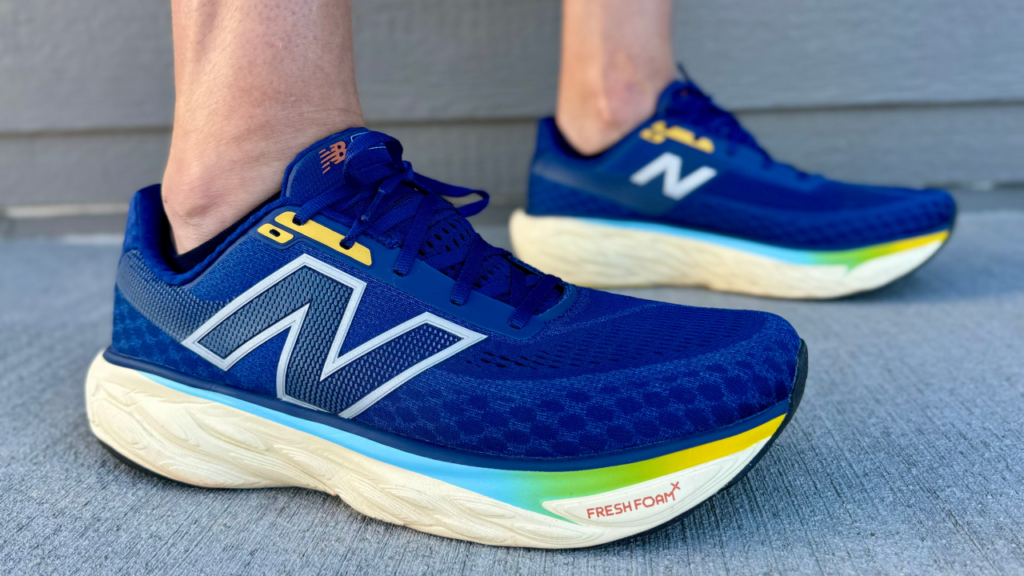
How did it perform for Drew?
Drew: It’s hard for me to even think of the New Balance 1080v14 as an all new model. It’s more of a step change. Slightly tweaked midsole geometry, improved durability via small changes to the forefoot stiffness and outsole coverage, and minor revisions to the upper make the 1080v14 a better shoe than 1080v13. But those changes don’t really make it much different.
This is a case where if you like the 1080v13, keep buying that at a discount until you can no longer find it. Then at that point, transition to the 1080v14. You likely won’t even notice much of a difference when you finally make the switch. It’s that close.
Technically the biggest difference is the weight. The 1080v14 is about an ounce heavier than the 1080v13. I didn’t notice the difference while running. But even for those that do, the trade off in extra durability is worth it because it was so easy to burn through the 1080v13’s outsole. The New Balane 1080v14 is a daily running shoe that can pick up the pace when needed so it doesn’t really need to be lightweight at the expense of long term usage.
But Annie is not nearly as beefy as me [Editor’s Note: That’s an understatement. If you’re a steak burrito, she’s a measly side salad] so let’s find out if her 1080 experience changed as little as mine did.
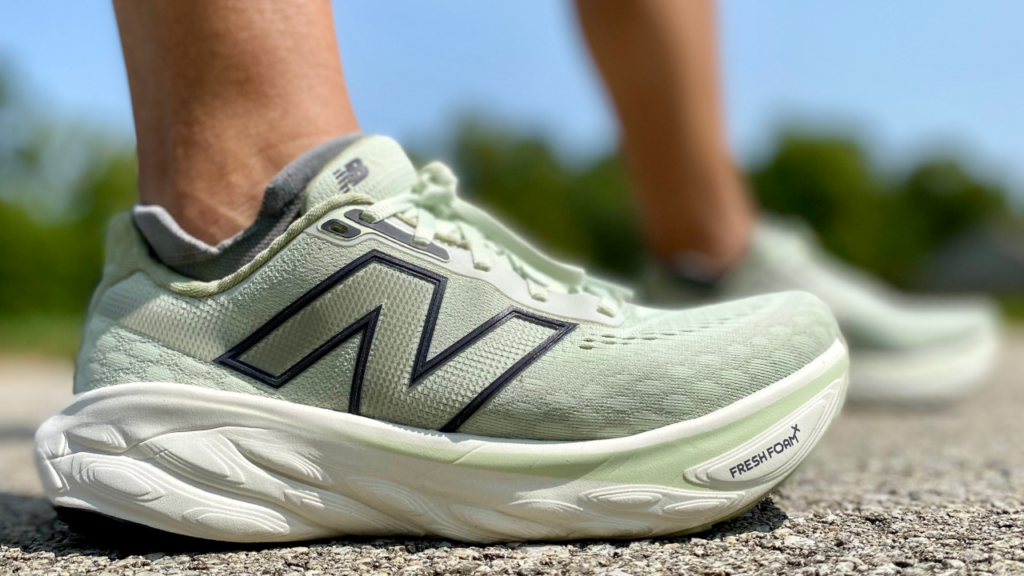
How did it perform for Annie?
Lest the reader envision said measly side salad as dainty, let me clarify further that this bed of greens over here is mostly a vessel for massive amounts of feta cheese, kalamata olives, as well as a hunk of dense bread doused in olive oil on the side. That said, I am hella short.
And, in fairness, I can subsequently be sensitive to it when a model update sees such an increase in weight. But it didn’t annoy me here in the New Balance 1080v14. Instead, the dominating change for me was actually the added forefoot stiffness and structural elements that altered the ride experience. It wasn’t a huge, bad thing – just different.
The shoe felt good, still soft, and akin to its predecessor, but I sort of missed the super squishy bounce of v13. The 1080v14 feels more predictable, lower to the ground (despite having the same stack height – go figure), and definitely more stable to me as a result.
I think part of that stability is coming from the medial sidewall back toward the heel, which connects up into a structural overlay in the upper (a sort of band with an “N” on it). I didn’t always love the sensation of those elements. But the upper did break in more eventually, and the pressure of the sidewall disappeared more on the run compared to when standing or walking. It’s still a very neutral shoe in the end.
I do think those features combined with the stiffer forefoot give this version a broader appeal in the sense that v13 was too squishy for some. While I, too, felt my quads got a bit of an extra burn due to all its cushy goodness at times, I signed up for it repeatedly because that shoe was fun to run in. The new features on the New Balance 1080v14 have refined the shoe in many ways to be sure (durability being one unquestionable upgrade); but this version feels a little nondescript to me on some runs – perfectly comfortable and effective – just less distinct.
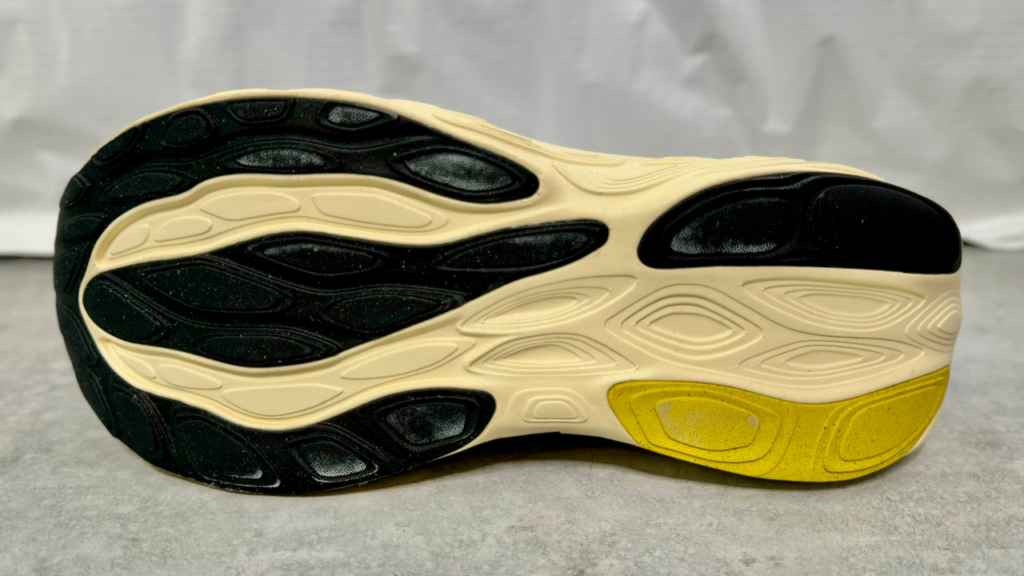
Pros
- Durability improvements
- Comfortable engineered mesh upper
- Squishy, fun version of Fresh Foam X (for Drew)
- Wide foot friendly plus it’ll come in two wider versions
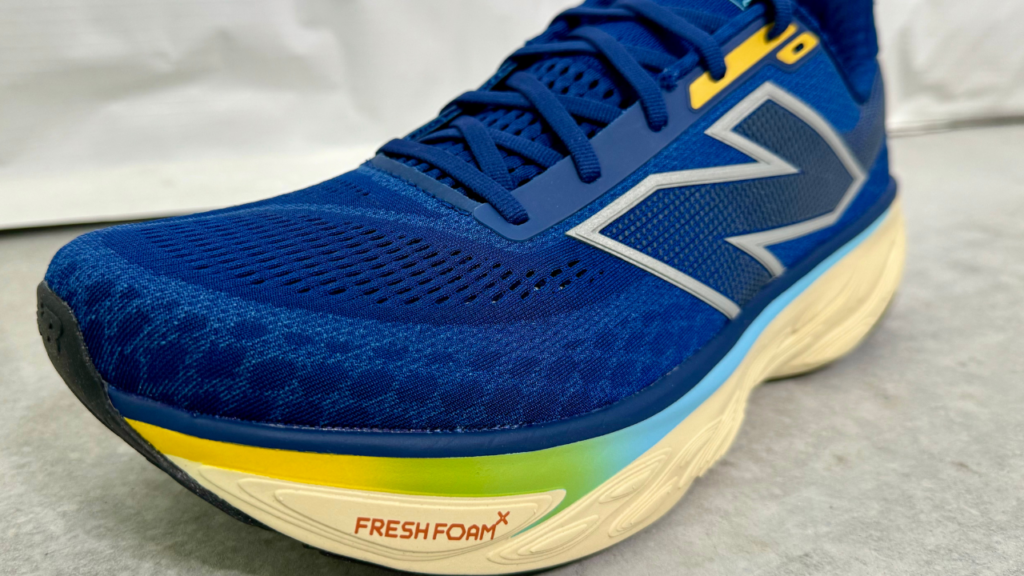
Cons
- An ounce heavier than the 1080v13
- Less squishy, fun version of Fresh Foam X (for Annie)
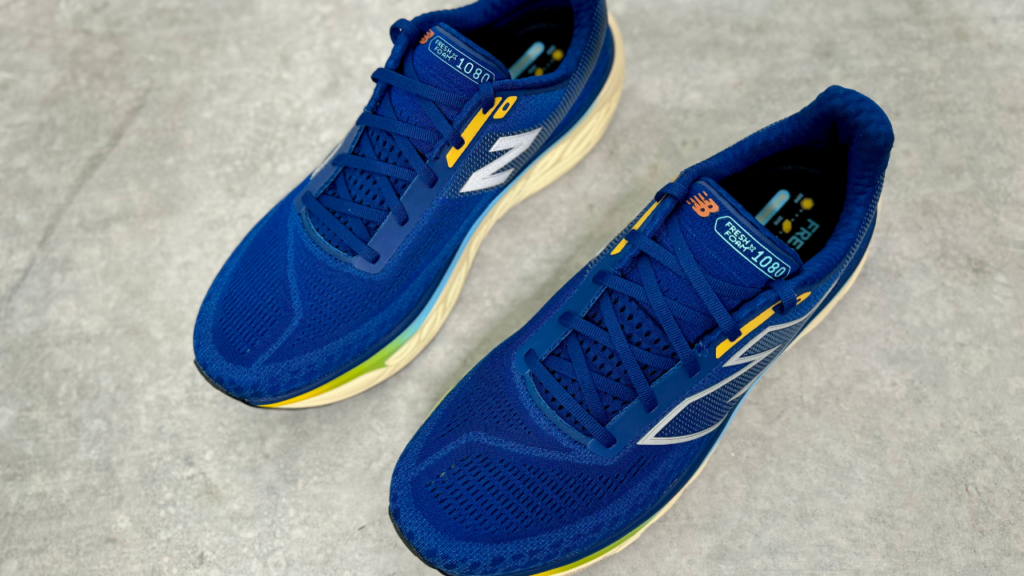
Is the New Balance 1080v14 wide foot friendly?
Drew: Yes, the New Balance 1080v14 is wide foot friendly in that it has extra room through the midfoot. The pinky toe area does swoop in a bit so if that’s a trouble area, go with either the Wide (2E) or X-Wide (4E) versions that will be available shortly. Lengthwise, the 1080v14 fits true to size.
Annie: What Drew said.
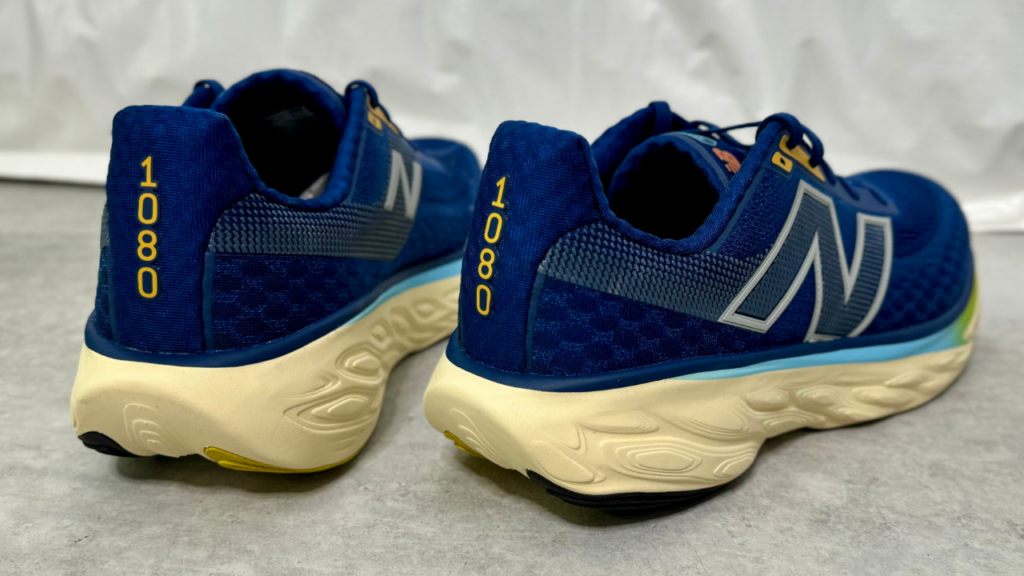
Is the New Balance 1080v14 worth $165?
Drew: I still don’t like that the New Balance 1080v14 is priced $5 more than the majority of top end daily trainers from other brands. $165 is in the ballpark of where its competition sits though so it’s fairly priced. However, you can get a lot of awesome shoes in the $140-160 range so make sure to check out our Best Running Shoes list and try on some of the candidates before deciding which is best for you.
Annie: This price kind of annoyed me last year, and it still does. It’s not wrong, but it also feels not quite right for the reasons Drew mentioned above.
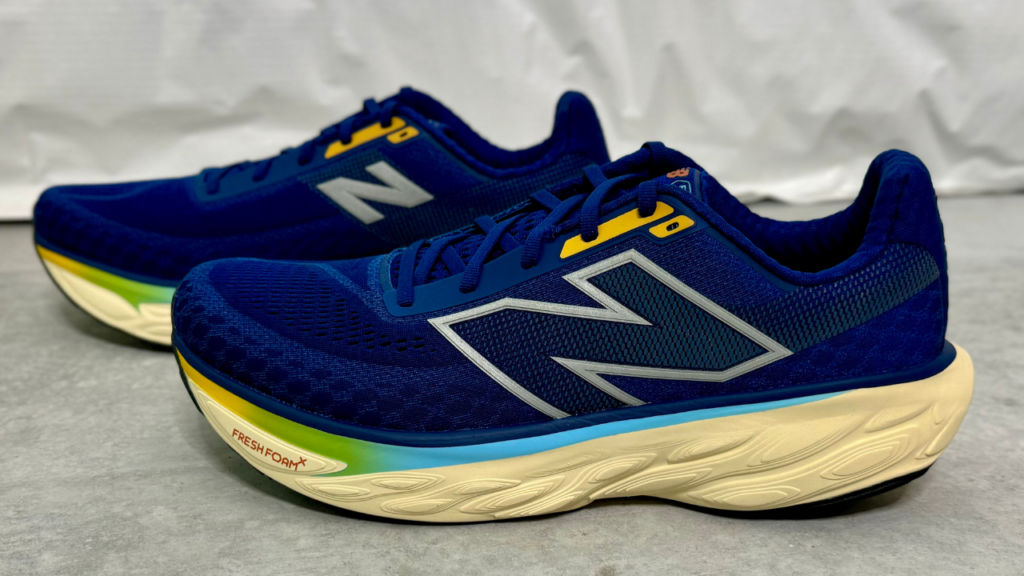
New Balance 1080v14 Summary
Drew: The New Balance 1080v14 is a slight upgrade from the 1080v13 and continues the big (positive) change made to the 1080 line last year. It’s a more versatile shoe than it was previous to 2023 and that direction is necessary to help the 1080 continue competing in a crowded running shoe market.
That said, the best bet for 1080 fans is to keep buying the 1080v13 until it’s no longer available in stores or online. At that point, transitioning to the 1080v14 makes sense. Only runners who need extra durability should upgrade now.
Annie: The New Balance 1080v14 is a more stable, more versatile, and more durable shoe than the 1080v13. It’s a solid daily trainer that provides plenty of comfort without letting you get lost in the mush.
But, I agree with Drew (albeit for slightly different reasons) that finding the 1080v13 at a more competitive price would be a great move for the time being – with the exception to that being those who need to prioritize a slightly sturdier feel and greater durability.
How does the Author Run?
Drew Whitcomb (age 42, 6’6″ 195lbs): Runs daily with a once a week rest day. Runs a lot of miles due to testing needs and a growing affinity for long-distance races. Regularly competes in marathons, half-marathons, 10k, and 5k races.
Annie Keris (age 39, 5’0” 117lbs): Typically follows a “two days on, one day off” running routine. “On” days include daily miles, speed work, and long runs. An “off” day usually involves yoga and mobility/recovery work. Enjoys occasional racing but perhaps enjoys the training process even more. Gravitates most toward the half marathon distance, but ventures into the 10k and 5k as well. The marathon is thus far uncharted territory…
Disclosure
While New Balance did send pairs of the New Balance 1080v14 to facilitate this review, the company had no involvement in this review, didn’t receive an advance look at it, and has not attempted to influence it.

